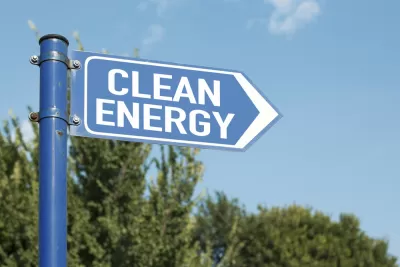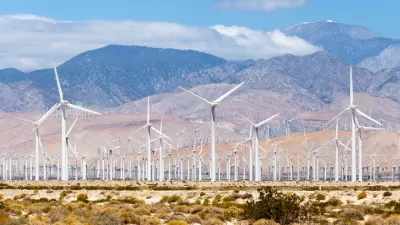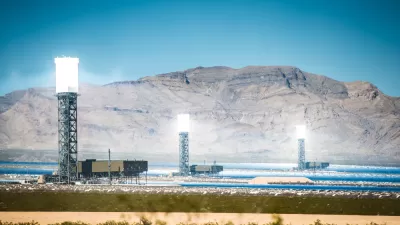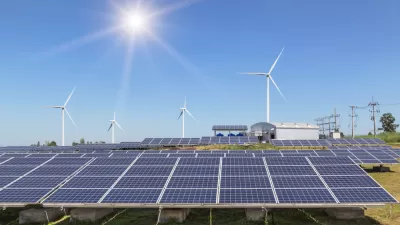Solar and wind power are cheaper than ever, but they remain variable. To make the best use of renewable resources, the electrical grid needs to network more small free-standing power sources together.

Moving away from fossil fuels means electrifying more of the things we use. But just electrifying them is not enough. To take advantage of clean energy, like solar and wind, grids need to handle variable energy supplies. That means power must come from multiple sources. Microgrids, which are small free-standing power sources provide this and, what's more, their redundancies can keep providing power in disasters.
"The highly digital modern world also demands a more reliable grid, capable of providing high-quality power to facilities like hospitals or data centers, where even brief brownouts can cost money or lives," David Roberts and Alvin Chang report for Vox. The recent hurricane season demonstrated just how deadly power outages can be.
"Most microgrids, especially in wealthier nations, are grid-connected — they are embedded inside a bigger grid, like any other utility customer," Roberts and Chang write. But, importantly, they can "island" themselves, meaning if there is some problem with the larger grid they can separate themselves from it. Roberts and Chang explain that the solution can be as simple as a hospital maintaining a generator or as sophisticated as networked renewable energy that pulls and stores power from various locations and makes adjustments on the fly in changing conditions.
FULL STORY: Meet the microgrid, the technology poised to transform electricity

Planetizen Federal Action Tracker
A weekly monitor of how Trump’s orders and actions are impacting planners and planning in America.

Map: Where Senate Republicans Want to Sell Your Public Lands
For public land advocates, the Senate Republicans’ proposal to sell millions of acres of public land in the West is “the biggest fight of their careers.”

Restaurant Patios Were a Pandemic Win — Why Were They so Hard to Keep?
Social distancing requirements and changes in travel patterns prompted cities to pilot new uses for street and sidewalk space. Then it got complicated.

Platform Pilsner: Vancouver Transit Agency Releases... a Beer?
TransLink will receive a portion of every sale of the four-pack.

Toronto Weighs Cheaper Transit, Parking Hikes for Major Events
Special event rates would take effect during large festivals, sports games and concerts to ‘discourage driving, manage congestion and free up space for transit.”

Berlin to Consider Car-Free Zone Larger Than Manhattan
The area bound by the 22-mile Ringbahn would still allow 12 uses of a private automobile per year per person, and several other exemptions.
Urban Design for Planners 1: Software Tools
This six-course series explores essential urban design concepts using open source software and equips planners with the tools they need to participate fully in the urban design process.
Planning for Universal Design
Learn the tools for implementing Universal Design in planning regulations.
Heyer Gruel & Associates PA
JM Goldson LLC
Custer County Colorado
City of Camden Redevelopment Agency
City of Astoria
Transportation Research & Education Center (TREC) at Portland State University
Camden Redevelopment Agency
City of Claremont
Municipality of Princeton (NJ)





























